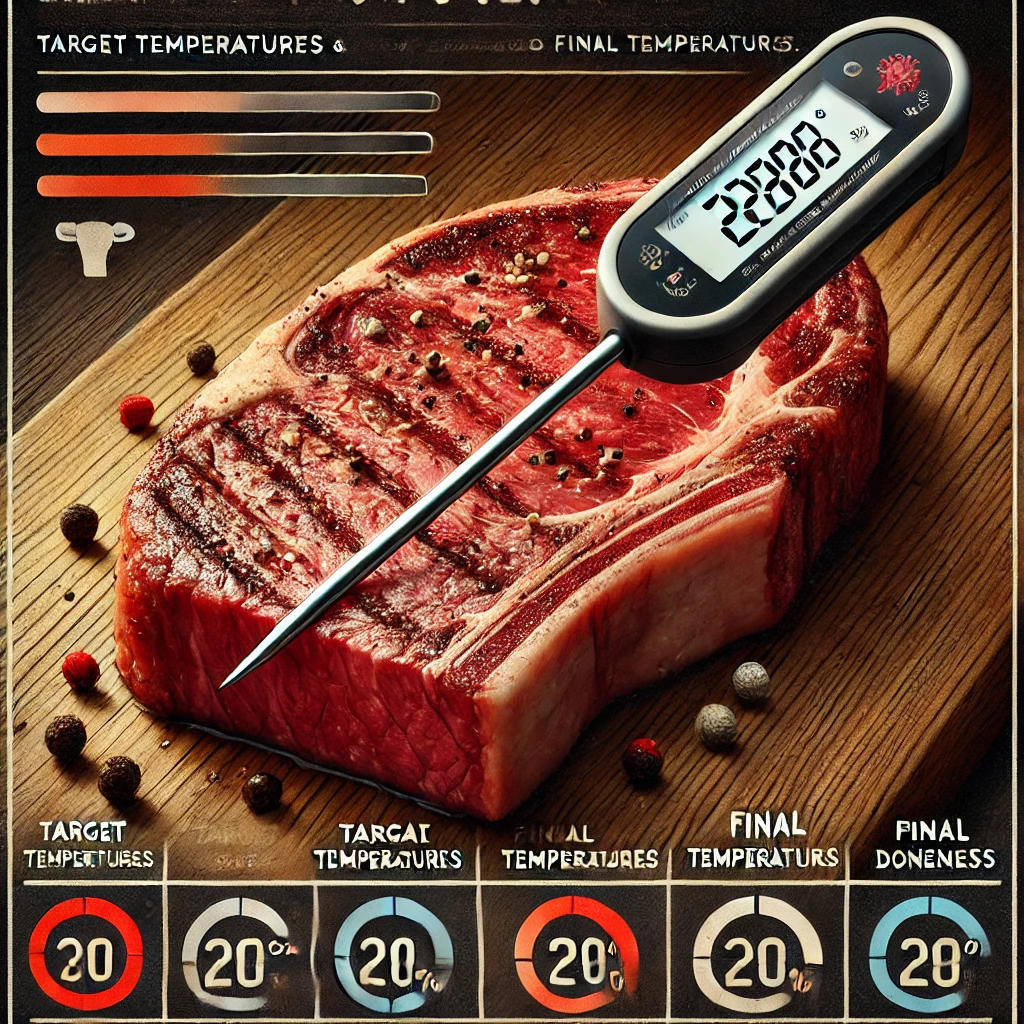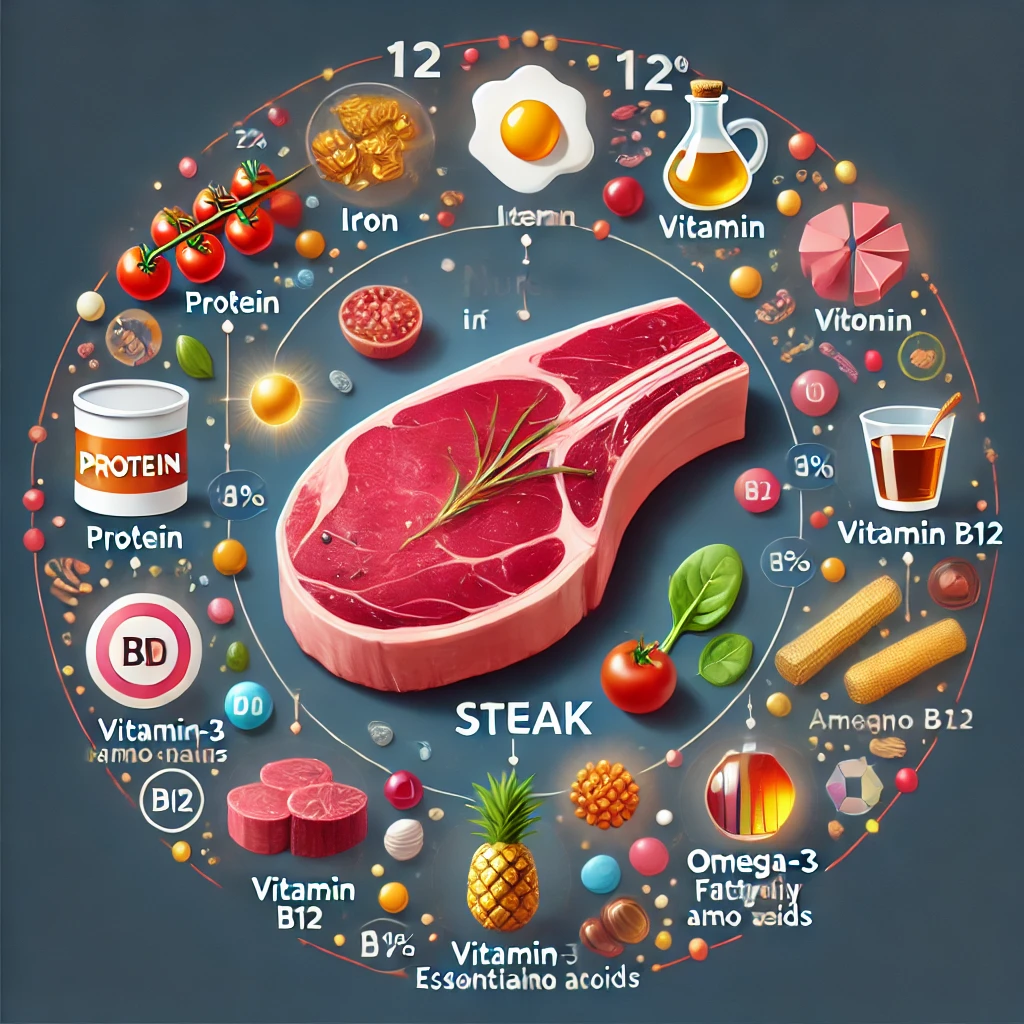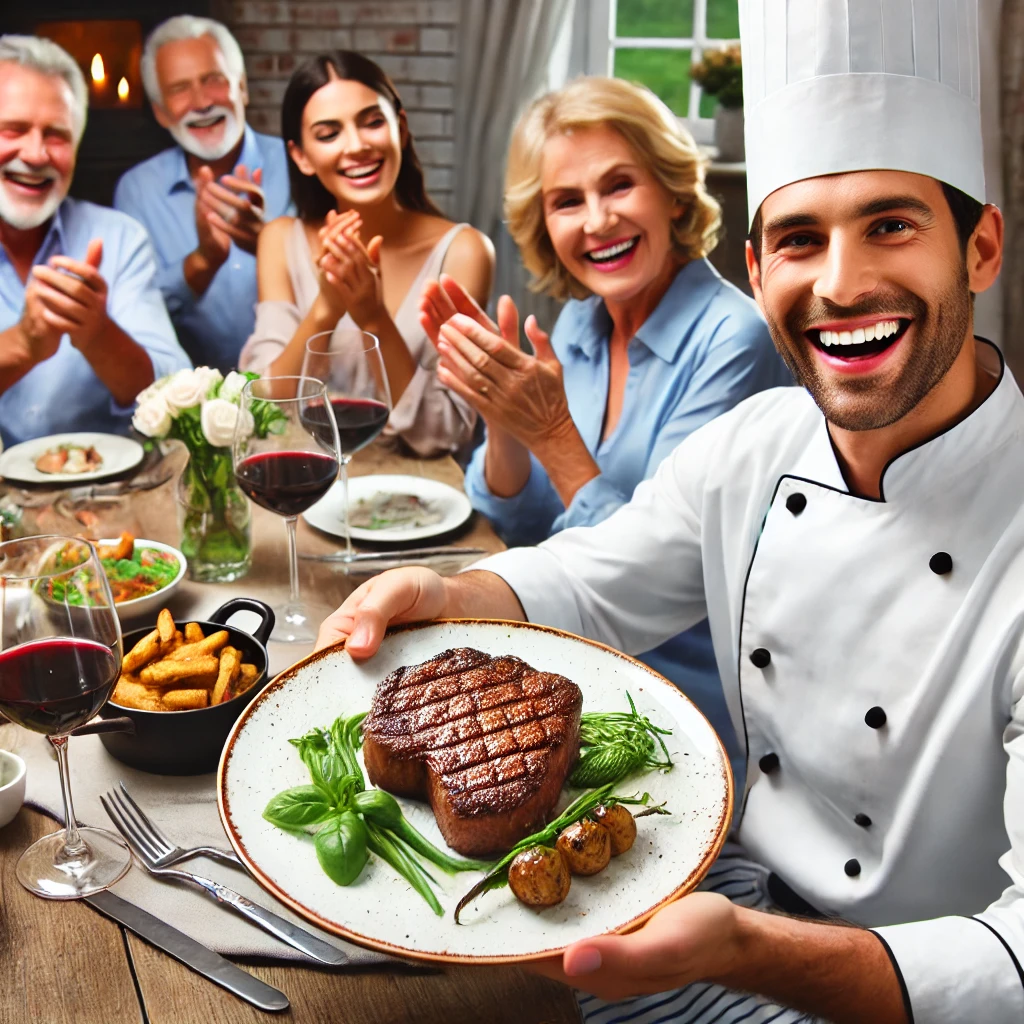Introduction

Ever wondered how you can get that perfect steak, crispy on the outside and juicy on the inside? The reverse sear is the answer. This method is a game changer for steak lovers. It delivers restaurant-quality results right in your own kitchen. This guide will explore the benefits of reverse-searing steaks, as well as provide step-by-step instructions on how to master this technique. Are you ready to up your steak-cooking skills?
What is reverse searing?

The reverse searing technique involves cooking your steak slowly at low heat before sear it on high heat. Reverse searing is a better method than the traditional searing and then cooking. It ensures that the steak cooks evenly throughout, with a beautiful caramelized crust.
Why choose Reverse Sear?

Enhance Flavor and Texture
Why settle for a steak that is average when you can have perfection? The reverse searing will bring out the best of your steak. Slow cooking allows meat to cook evenly and reduces the risk of undercooking. The steak will retain its juices and taste delicious every time.
Consistency
Have you ever found that one portion of a steak is rare, while the other is well-done after cooking it? This inconsistency is eliminated by reverse searing. You can achieve uniformity in the doneness of the meat by cooking the steak evenly and slowly.
Stress-free Cooking
The reverse searing method is forgiving. You’ll have less risk of overcooking or burning your steak because you are cooking it at a lower temperature. It’s a great choice for novice and experienced chefs alike.
The Right Cut

The Best Cuts to Reverse Sear
Not all steaks have the same quality. To get the best results when reverse searing, choose thicker cuts of beef. The best cuts are those that are 1.5 to 2 inches thick. Here are a few ideal choices:
- Ribeye is known for its rich flavor and marbling.
- Strip Steak : Tender and flavorful.
- Tenderloin : This tenderloin is also known as filet Mignon.
- Porterhouse: This is a combination of strip steak and tenderloin.
Freshness and quality
Choose only fresh, high-quality meat. Choose steaks that have good marbling. This indicates flavor and tenderness. Buy your steaks from a reliable butcher or trusted meat supplier.
Prepare Your Steak

Seasoning
It is important to season your steak correctly. Both sides of the meat should be generously coated with freshly ground black and kosher pepper. Salt not only improves the taste but also helps tenderize meat.
Bring to room temperature
Let your steak rest at room temperature about 30 to 45 minutes before cooking. This will help the steak to cook evenly and more consistently.
Dry Brining
Dry brining steaks can add an extra layer of flavor. Let the steaks rest in the fridge uncovered for several hours, or even overnight. The salt will penetrate the meat deeper, increasing flavor and tenderness.
Reverse Sear Process

Guide Step-by-Step
- Pre-heat Your Oven Set your oven at a low temperature.
- Prepare the Baking Sheet Place a wire rack onto a baking tray. This will allow air to circulate and cook the steak evenly.
- Slow Cook Steak Place the steak in the oven on a rack. Cook until your desired internal temperature is reached (see below for the section on cooking temperatures and times).
- Pre-heat a Skillet Once the steak has reached your desired temperature inside, heat a cast iron skillet on high heat.
- Sear Steak Add some oil that has a high smoking point (such as canola oil or avocado oil) into the skillet. Sear each side of the steak until a golden brown crust forms.
- Rest Your Steak Let the steak rest a few moments before serving. This will allow the juices in the meat to be redistributed.
Use the grill for reverse searing
You can cook the steak on a grill rather than in an oven if you want a smoky taste. Set your grill to indirect heat, and cook the steaks on the cooler side of the grill before sear them over direct heat.
Cooking times and temperatures

The Doneness Levels
| Doneness | Target Temperature in Degrees Fahrenheit | Temperature Final (degF). |
|---|---|---|
| It is Rare to Find a Good Alternative | 115degF – 120degF | 125degF |
| Medium Rare | 120degF – 125degF | 130degF |
| The Medium | 130degF – 135degF | 140degF |
| Medium Well | 140degF – 145degF | 150degF |
| Well Done | 150degF – 155degF | 160degF |
How to use a meat thermometer
When reverse searing, a meat thermometer will be your best friend. You can ensure that the steak is cooked to your desired internal temperature by using a meat thermometer. For accurate readings, insert the thermometer in the thickest part.
Adjusting for thickness
It will take longer for thicker steaks to reach the internal temperature you desire. Consider increasing the cooking time for a thicker cut to achieve even cooking.
Finishing touches

Add Flavor
Add a small amount of herb butter to your steak before serving. This adds to the flavor of your steak and gives it a luxurious feel. Make your own herb butter using softened butter, garlic, herbs and a pinch salt.
Garnishes and Sides
Serve your steaks with classic side dishes like mashed potato, grilled asparagus or a salad. Just before serving, add a sprinkle of sea salt or a little black pepper.
Sauces
Add a tasty sauce to your steak. Choose from classics like bearnaise or peppercorn sauces. These sauces enhance the flavor of the steak.
Serving Suggestions

Presentation
Presentation is important. To ensure tenderness, slice your steak across the grain. Place the steak slices on a plate, and top with fresh herbs or balsamic glaze.
Wine Pairing
A great steak deserves an equally good wine. Choose a powerful red wine such as Cabernet Sauvignon or Malbec to pair with your reverse-seared steak. These wines have robust flavors that complement the richness of the steak.
Meal Pairings
Pair your steak with complementary dishes for a balanced dinner. You can pair your steak with roasted vegetables, crisp Caesar salads, or creamy au-gratin potatoes.
Common mistakes to avoid

Not Using A Thermometer
It is not a good idea to guess the level of doneness. Use a meat temperature to ensure accuracy.
Skip the resting step
Resting the steak will allow for the juices in it to be redistributed, making your steak juicier. Do not skip this step.
Overcrowding of the Pan
Avoid overcrowding your pan when searing. The steak will steam instead of sear and a crust won’t form.
The Wrong Oil
For searing, use an oil that has a high smoking point such as avocado or canola oil. Butter and olive oil will burn at high temperature, which can affect the taste and look of your steak.
Health Benefits of Steak

Nutrient-Rich
Steak contains essential nutrients such as iron, vitamin B12, and protein. These nutrients are essential for muscle growth, energy and general health.
Sources of healthy fats
Steak contains fat but it also contains healthy fats, such as omega-3 fatty acid, especially in grass-fed meat. These fats promote heart health and brain functions.
Satisfying
Steak, a high-protein meal, can help you feel fuller and more satisfied. This is good for weight loss.
Amino Acids
Steak is a great source of essential amino acids that your body requires to repair and build tissues. It is a great source of protein for anyone looking to build or maintain muscle mass.
Conclusion

The reverse searing method is an excellent way to get a perfect steak every time. Follow these steps to impress family and friends with your culinary abilities. The key to a perfect steak is to be patient and pay attention to the details. Next time you want steak, try the reverse sear technique. You won’t regret it!
FAQs (Frequently Asked Questions)

1. What is the best steak to reverse sear?
For reverse searing, thicker cuts such as ribeyes, strip steaks, tenderloins, and porterhouse are best.
2. How long do I cook steaks in the oven for?
The length of time it takes to cook a steak depends on its thickness and the desired degree of doneness. It usually ranges between 30 and 60 minutes.
3. Can I reverse-sear a frozen steak?
To ensure an even cook, it’s best to completely thaw the steak before reverse searing.
4. Do I need season my steaks before or after cooking it?
To enhance the flavor of your steak and to help it tenderize, seasoning is recommended before cooking.
5. What kind of pan should I choose for searing?
Cast-iron pans are ideal for searing steaks because they retain heat and help form a nice crust.
6. Can I use the same method on other meats?
The reverse sear can also be used on other thick cuts of beef, such as pork chops and lamb chops. It provides similar benefits, including even cooking and great sear.
7. How can I enhance the flavor of my steak?
You can also marinate the steak before cooking, or top it with compound butter (mixed herbs, garlic and spices).
8. How do you store leftover steak?
Keep leftover steaks in an airtight container and store them in the fridge. You can reheat it gently in the microwave or enjoy it cold with salads and sandwiches.
9. When can I sear the steak?
Check the temperature of the meat with a thermometer. It’s time to sear when it reaches a temperature that is about 10-15degF lower than your final desired temperature.
10. Why is it important to rest the steak?
Resting your steak will allow the juices to be redistributed throughout the meat. This makes it more juicy and flavorful.